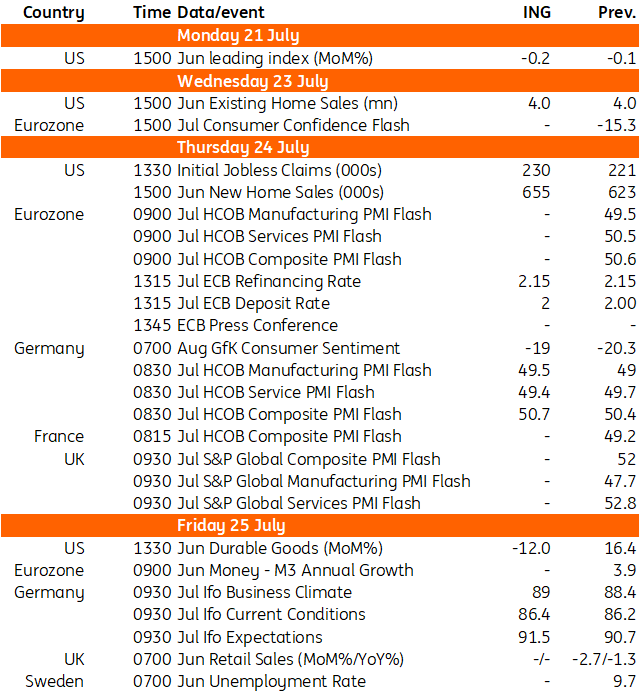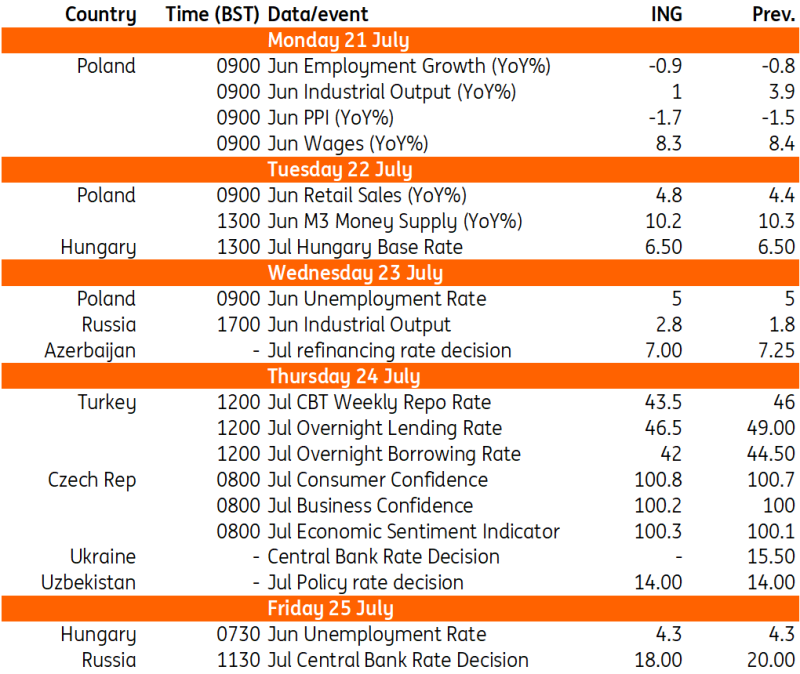Central banks just love to in gradual, 25 basis-point chunks, don’t they? Nobody knows why. And frankly, it doesn’t always make much sense, writes James Smith. Should the next week? And should the Fed and BoE speed things up?
THINK Ahead: Central Banks’ Unwritten Rule
Life is full of unwritten rules, and let’s face it, nobody does this stuff better than us Brits. Eye contact on the London Underground? Absolutely not. Jumping a queue? Tantamount to declaring war. And let’s not forget the need to say “sorry” when somebody else walks into you…
Given Britain semi-invented central banking (ok with a little help from Sweden), it’s no surprise that the world of monetary policy also has its fair share of these silent understandings. The biggest of all? The idea that happen in gradual quarter-point increments.
But it’s a rule that is no longer fit for this day and age. In an era where mortgages are very rarely on floating rates – and corporate hedging is more commonplace – cutting rates in bite-sized chunks won’t always do very much. Not very quickly, anyway.
Just look at the 2022 interest rate hiking cycle. It was the most aggressive we’ve seen for decades, yet the average rate on outstanding US mortgage debt increased by a mere 0.7pp from its pandemic low. That’s despite rates on new 30-year lending soaring from 3% to a peak of almost 8%.
Monetary policy has become more like controlling an oil tanker. And it means central banks run a much greater risk of ending up behind the curve. If officials decide rates need to go to neutral, or even accommodative territory, you can make a decent case for getting there ASAP.
None of this is new. But it’s key to understanding how central banks are likely to react through the second half of the year.
Take the Bank of England. The hawks – specifically Chief Economist Huw Pill – aren’t at all convinced that rates should be cut at all. This week’s inflation data will only reinforce that view. The doves, by contrast, have been gunning for aggressive 50bp rate cuts. The result – the very gradual 25bp pace of rate cuts that have come through since last summer – looks like an awkward compromise.
For now, fears about the BoE slipping behind the curve have been allayed by big upward revisions to May’s ominous drop in payroll numbers. But with employment having fallen in seven out of the past eight months, the Bank can’t take anything for granted. An August rate cut is all but guaranteed.
When it comes to the Fed, life is complicated by the very real risk that this summer’s inflation figures come in hot. It wants to be quite sure that a one-off tariff increase doesn’t morph into a more permanent bout of inflation. And that’s still probably true, despite another remarkably benign core CPI figure this week.
But as I argued last week, there are good reasons to think those fears won’t come to pass. And when the Fed is quite sure that the eye of the storm has passed, it could end up cutting rates fairly swiftly. James Knightley, ING’s Chief International Economist in New York, thinks that the first cut won’t come until December, but when it does, it could be a bold 50bp move. And if that sounds strange, remember that it’s exactly what the Fed did last September.
The ECB – as the US president keeps reminding us – is much closer to the end of its easing cycle than the beginning. Unlike the Fed or BoE, ECB rates are already at neutral, neither stimulatory nor restrictive for economic activity.
But that doesn’t mean everything I said earlier doesn’t still have some resonance. The ECB’s easing cycle doesn’t look quite as finished as it did back in June, as Global Head of Macro (BCBA:) Carsten Brzeski writes here in his preview. Officials are toying with another rate cut – so why not get on with it?
Confidence in Europe isn’t exactly jubilant; both consumer and service sector business sentiment have fallen in recent months. The PMIs, which are updated next week, are unlikely to be particularly buoyant.
In reality, though, absolutely nobody is expecting a rate cut next week. Despite making plenty of noise about the euro – and specifically the risk of breaching 1.20 on – the ECB can afford itself some time to wait and see. Particularly given there’s a pretty decent chance that Trump’s 30% tariff threat on 1 August doesn’t come to pass.
Remember, too, that things are about to get much more interesting. How quickly will Germany’s fiscal spending splurge show up in the real economy and inflation? Will the ECB be pushed into much faster rate cuts than markets are currently pricing?
Those are exactly the sorts of questions I’ll be putting to Carsten and euro rates guru Michiel Tukker next Wednesday in our live webinar, just a day before the ECB’s July meeting. Sign up today – it promises to be “not bad”, which is the British way of saying, absolutely incredible.
THINK Ahead in Developed Markets
United States
- It is a very quiet week for scheduled US data and events. The proximity to the 30 July FOMC meeting means that the central bank has entered its quiet period, so officials are not allowed to publicly comment on the economy and potential monetary policy options.
- Home Sales (Thur): In terms of data, we have both and numbers, but with the mortgage rate ticking up again, the lack of affordability means demand is lacklustre. The National Association of Home Builders reported this week that over the past 30 years, prospective buyer traffic for properties has only been lower during the pandemic lockdown and in the aftermath of the Global Financial Crisis. Meanwhile, durable goods orders will drop sharply due to massive swings in orders for Boeing (NYSE:) jet aircraft. Excluding civilian aircraft and defence orders, the underlying story remains subdued.
Eurozone
- European Central Bank meeting (Thur): All things considered, a wait-and-see approach remains the most probable course of action for the ECB next week. With the next potential tariff escalation not expected until 1 August, there’s little reason for a pre-emptive rate cut now. The ECB’s policy is to act on measures only once they’re in effect, not when they’re merely announced. These days, it is a wise decision. At the same time, the strengthening of the euro since the last meeting has not been strong enough to justify a rate cut next week. This is why, despite higher uncertainty and probably only after a heated debate, we expect the ECB to stay on hold.
THINK Ahead in Central and Eastern Europe
Poland
- Industry (Mon): Amid a persistently stagnant EU economy (Poland’s main export market), the recovery of Poland’s manufacturing sector remains weak, with growth barely positive. Monthly fluctuations are largely driven by calendar and statistical effects. Since June 2025 had the same number of working days as in 2024, growth was likely negligible. Moreover, the manufacturing PMI points to downside risks for the industrial outlook.
- Labour (Mon): April’s spike in wages appears to have been a one-off, and June’s figures are expected to mirror the growth dynamics seen in May. Wage growth remains in the high single digits but is clearly easing, even if still elevated. This could potentially slow the pace of disinflation, particularly in services. Meanwhile, employment in the enterprise sector continues to show signs of softness, reflecting both a limited supply of workers and slightly subdued demand. Supply-side constraints still dominate. The unemployment rate remains near all-time lows and is among the lowest in the EU.
- Retail (Tue): Despite consumers spending cautiously, demand for goods, especially durable goods, has been revived in recent months. Annual retail sales growth in June was likely stronger than in May, confirming that private consumption is gaining momentum. This continues to be the main driver of solid GDP growth this year, supported by a rebound in fixed investment.
Hungary
- Rate decision (Tue): Persistently high inflation expectations in Hungary, coupled with ongoing geopolitical and trade uncertainties at a global level, continue to cast a shadow over the local inflation outlook and play a central role in monetary policy decision-making. Taking this into account, we still see no scope for the National Bank of Hungary to ease monetary policy in the short term. In line with this view, we expect the central bank to maintain interest rates at their current level at the next meeting on 22 July.
Czech Republic
- Both consumer and business confidence have only marginally improved this month, as the Czech economic rebound continues. Households benefit from solid real wage gains, while the industrial base has likely put the worst behind it. That said, mediocre demand from European trading partners puts a lid on more substantial improvements in the business mood.
Turkey
- The Governor recently stated that the Turkish central bank (CBT) is closely monitoring TRY deposits held by locals, viewing trends in these accounts as a key indicator for monetary policy. This comment followed the rise in the withholding tax on TRY time deposits, reducing the return for deposit holders and is a signal of the CBT’s cautious stance on resuming interest rate cuts. Accordingly, we expect the bank to start rate cuts with a measured 250bp on 24 July (down to 43.5%) and continue with incremental moves in the period ahead if disinflation remains on track.
Azerbaijan
- Refinancing Rate (Wed): The Central Bank of Azerbaijan (CBAR) may opt for a 25bp cut in the refinancing rate from 7.25% to 7.00% on 23 July, following the dovish statement in June, deceleration of CPI growth by 0.3pp to 6.0%, weak 1.5% YoY GDP growth reported for 1H25, and the general improvement in the inflation context in the region. A hold with a dovish statement is less likely but also possible given the continued narrowing of the trade balance and persistently fast growth in retail lending.
Uzbekistan
- Rate Decision (Thur): The Central Bank of Uzbekistan (CBRU) will decide between holding the policy rate unchanged at 14.00% and a modest cut. Following the cautious tone of the June commentary, we believe a hold to be more likely, reflecting uncertainties regarding demand-driven pro-inflationary factors. Nevertheless, the continued strength of the Uzbeki soum amid a favourable price environment could be seen as an additional disinflationary factor, potentially bringing forward the timing of the next cut.
Key Events in Developed Markets Next (LON:) Week

Source: Refinitiv, ING
Key Events in EMEA Next Week

Source: Refinitiv, ING
Disclaimer: This publication has been prepared by ING solely for information purposes irrespective of a particular user’s means, financial situation or investment objectives. The information does not constitute investment recommendation, and nor is it investment, legal or tax advice or an offer or solicitation to purchase or sell any financial instrument. Read more

